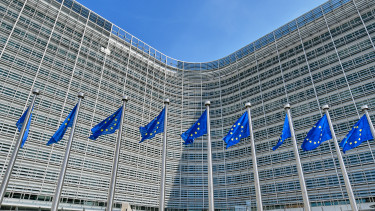WHO warns of twin Covid-flu risk, with "incredibly low" vaccination rates

In the United States, several European countries, and other parts of the world, there have been reports of rising hospitalizations linked to respiratory infections in recent weeks. Death rates have also ticked up among older adults in some regions, but far below the COVID pandemic peak.
Spain’s government has reinstated mask-wearing requirements at healthcare facilities, as have some U.S. hospital networks.
Too many people are in need of serious medical care for flu, for COVID, when we can prevent it,
said Maria Van Kerkhove, the World Health Organization’s interim director of epidemic and pandemic preparedness.
She cited “incredibly low” vaccination rates against flu and COVID in many countries this season, as the world tries to move past the pandemic and its restrictions. (Scroll down for more data on Hungarians' fading inclination to get shots.)

Only 19.4% of U.S. adults have received this season’s COVID vaccine based on the U.S. Centers for Disease Control (CDC) and Prevention’s National Immunization Survey, despite a recommendation that all adults get an updated shot to protect against serious illness.
Nearly half of U.S. adults over 18 got a flu shot this season (44.9%), roughly the same as last year (44%), according to the CDC.
We don't think enough people have gotten the updated COVID vaccine. Folks still aren't understanding that COVID is still a more severe disease than flu,
CDC director Mandy Cohen said in an interview.
In Europe, flu is circulating at a higher rate than COVID,
the European Centre for Disease Prevention and Control (ECDC) said. In total, 24% of a representative sample of tests came back positive in the last week of 2023, up from 19% a fortnight earlier.
The rates are in line with previous flu seasons, said ECDC’s respiratory virus expert Edoardo Colzani. But “now we have COVID-19 as a new, unwanted guest”, he said.
The ECDC did not have vaccination rates for the continent for flu or COVID, but Colzani said early data showed COVID vaccine uptake well below pandemic levels.
In Europe, the new COVID shots are recommended for high-risk groups only, such as seniors and the immunocompromised.
Vaccine fatigue
The vaccines are still very effective at preventing serious illness, even if they do not block infection, experts said.
This year’s flu shots, made by a range of manufacturers, is estimated to reduce hospitalization risk by 52%.
But “fatigue for COVID vaccination” is hampering uptake, Colzani said. In Italy, for example, 8.6% of the eligible population have had their third COVID booster after the initial vaccination series, Ministry of Health data from Jan. 7 showed.
The data for flu is not yet available, but a study by Federfarma, the association of Italian pharmacies, said 15% of Italians had been vaccinated against flu this autumn, compared to just over 20% last season.
We have written about the latest epidemiological statistics in Hungary on Thursday:
A brief history Covid vaccination in Hungary
Hungary was among the first EU member states to start vaccinating against coronavirus at the end of 2021. It purchased not only vaccines that were approved by the European Medicines Agency (EMA), but also Russian (Sputnik V) and Chinese (Sinopharm) shots.
First booster doses (2nd shots) were given as early as 18 January 2021, and third doses were made available on 2 August that year. Fourth doses were made available in early March 2022.
At the height of the vaccination spree in April 2021, nearly 190,000 jabs were administered a day (some 104,000 first, and some 83,000 second shots). By June, the rush subsided, but the vaccination numbers were still impressive, with the monthly average over 50,000 per day.
Authorities switched to weekly from daily reports in mid-May this year and altogether stopped publishing COVID-19 statistics on 27 June this year. The evolution of vaccination in Hungary are shown in the graphs below.
The first chart is for a longer, the one below for a shorter period.

The momentum fading virtually to nothing is shown here:

According to the European Centre for Disease Prevention and Control (ECDC) database,
18,378 COVID-19 VACCINES WERE ADMINISTERED IN HUNGARY IN 2023 UP TO 5 OCTOBER - IN ALL AGE GROUPS.
According to the latest figures by the Hungarian Central Statistical Office (KSH), there are over 1.2 million people in the country between 60 and 69 years of age, some 887,000 in the 70-79 and 433,000 aged 80 and over. Altogether there are some 2.5 million people in these three age groups we may consider as elderly. Also, they are those with the highest vaccination rates.
Here's the table showing the percentage of people in the given age groups that received their 1st, 2nd (primary course) and further (booster) shots. Not a reassuring set of data for sure, although the vaccination rate in risk groups (60 and older) is high(ish) even when it comes to third jabs.

Vaccine fatigue in Hungary is also clearly shown by the following table:

As for flu shots, we have asked the NNK for statistics and received figures for the past five cold seasons. Unfortunately, there is no public database for ongoing vaccinations.
Note that the following figures show only free-of-charge 3Fluart flu shots available for risk groups, i.e.
- people over 60 (regardless of health),
- people with chronic respiratory, cardiovascular or metabolic diseases,
- persons with reduced immunity,
- women who are pregnant or planning to have children.
The NNK said earlier that for this year's flu season, a total of 949,000 doses of 3Fluart vaccine are available those over 3 years of age, while 3,000 doses of Vaxigrip Tetra and 1,000 doses of Fluenz Tetra vaccine are soon be available for children under 3 years of age.

Cover photo: Marcus Brandt/picture alliance via Getty Images








